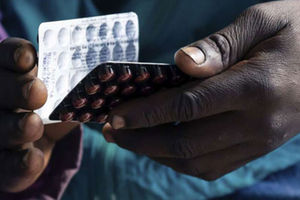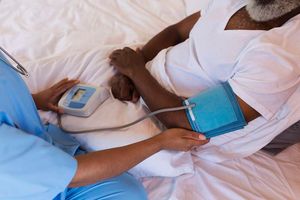Why are people afraid to go for Covid-19 vaccine?
What you need to know:
Covid-19 vaccines that have been developed so far:
- Sputnik V (Gam-COVID-Vac): It was the first vaccine to be developed and publicised. It was developed by Russia and is taken in 2 doses. It is stored in two forms: dry form at 2 to 8 degrees celsius and liquid form at -18.5 degrees celsius. It has 92 per cent efficacy.
- Pfizer-BioNTech (BNT162b2): It was developed by US and German pharmaceutical companies. The vaccine is taken in 2 doses and is stored at between -80 degrees celsius to -60 degrees celsius. It has 95 per cent efficacy.
- Moderna (mRNA-1273): It was developed in the US and is taken in two doses. It is stored at between -25 degrees celsius and -15 degrees celsius. It has 94.1 per cent efficacy.
- Oxford-AstraZeneca (AZD1222): It was developed in the United Kingdom and is also taken in 2 doses. It can be stored at between 2 to 8 degrees celsius. It has about 90 per cent efficacy.
- Novavax (NVX-CoV2373): This vaccine was also developed in the US. It can be stored in temperatures of between 2 and 8 degrees celsius and has about 89 per cent efficacy.
- Johnson & Johnson (Janssen): It was developed by Janssen Pharmaceuticals which is headquartered in Belgium. It is taken in a single dose. It has between 66 per cent and 85 per cent efficacy. It is stored in temperatures of between 2 and 8 degrees celsius.
- Sinovac: It was developed by China and is taken in two doses. Efficacy rates have ranged between 50 per cent and 91 per cent. It can be stored in temperatures of between 2 and 8 degrees celsius.
- Sinopharm: It was developed in China and is claimed to be 79 per cent effective in preventing Covid-19. It is taken in two doses.
- Convidecia (Ad5-nCoV): It was also developed in China and is a vector vaccine. The manufacturer, CanSino Biologics, has only released partial data on its efficacy rates even though the vaccine is already being administered.
Although vaccination against Covid-19 is currently the best way to fight the SARS-Cov-2 virus, there are some people who have shied away from taking the vaccine.
Data from the Ministry of Health show that by June 2021, only 1 million Kenyans out of a population of 47 million had been vaccinated.
Out of this vaccinated number, only 300,000 were fully vaccinated.
Although low turnout had been initially attributed to unavailability of vaccines, apathy is said to have been the major reason behind this.
Vaccine apathy has not only been witnessed in Kenya, but across the world as well; and the phenomenon is not new.
According to the 2019 Gallup World Poll, France has the lowest levels of trust in vaccines globally followed by Gabon, Togo, Russia, Switzerland, Armenia, Austria, Belgium, Iceland, Burkina Faso, and Haiti.
The poll attributed this to lack of confidence, complacency, and inconvenience in accessing vaccines.
Nearly a third of people from countries hardest by Covid-19 have had difficulty accepting vaccinations, according to a report from the Barcelona Institute for Global Health; the Vaccine Confidence Project at the London School of Hygiene and Tropical Medicine; Georgetown University Law School and City University of New York Graduate School of Public Health and Healthy Policy, .
"The problem of vaccine hesitancy is strongly related to a lack of trust in governments. Vaccine confidence will invariably go higher in countries where trust in governments and their handling of the pandemic is higher," said Dr. Jeffrey V. Lazarus, the ISGlobal researcher who authored the report.
The report showed that it is easier to administer the vaccine among elderly people compared to the younger generation.
“The next phase of fighting Covid-19 is on the diminished trust in a vaccine. We can’t hope to see the last of Covid-19 with a vaccine if we don’t start building vaccine literacy early and restore public trust in science,” said Prof. Heidi J. Larson, one of the senior coordinators of the report.
Like previous rollouts of vaccines for polio, tetanus and the human papillomavirus vaccines, apathy has also affected Covid-19 vaccination programs in Kenya.
Dr. Moses Masika, a virologist at the University of Nairobi, however says the government should still target vaccination for as many people as possible.
"The target proportion should be 80 per cent, and, or slightly lower or higher. If a large population is vaccinated, then the risk of infection will be reduced to levels that allow for the reopening of the country," he says.
He however points out that elements of vaccine hesitancy and vaccine misinformation on social media will need to be addressed.
“Vaccine apathy might be less because people may generally appreciate the urgent need to remedy the Covid-19 situation. However, not everyone will be enthusiastic about it, and the government will need to share as much information on the vaccine as possible to shore up confidence,” says Dr. Masika.
One of the areas of concerns has been the speed of vaccine development.
In August 2020, Russia became the first nation in the world to register a vaccine against Covid-19.
The vaccine known as Sputnik V was registered for widespread use after less than two months of human testing and clinical trials.
In December 2020, US and German pharmaceutical companies announced the development of the Pfizer BioNTech vaccine.
The United Kingdom became the first country to approve the vaccine which had been tried and tested in a large pool of clinical trials.
The Pfizer BioNTech vaccine was approved on December 1, 2020 for emergency use among frontline health care workers. This vaccine had been tested on 43,000 people.
The Pfizer vaccine scored an efficacy rate of 95 per cent while Russia’s Sputnik V vaccine scored 90 per cent.
According to the journal History of Vaccines, vaccines take between 10 and 15 years to be developed.
In most cases, vaccines go through five stages of development:
- Stage 1: Discovery research. Takes 2 to 5 years. Up to 100 potential vaccines are developed.
- Stage 2: Preclinical trials. Takes about 2 years. Vaccines are narrowed down to about 20 potential vaccines.
- Stage 3: Clinical development. This stage has three phases:
- Phase One: Vaccine safety. Takes one to two years. Vaccines are cut to 10 potential vaccines.
- Phase Two: Immune response: Takes two to three years. Vaccines are cut to 5 potential vaccines.
- Phase Three: Efficacy: Takes two to four years. One potential vaccine is identified.
- Stage 4: Regulatory review and approval. Takes one to two years.
- Stage 5: Mass manufacturing and delivery.
However, Dr. Thumbi Mwangi, a researcher and infectious disease epidemiologist at the University of Nairobi and at the Paul G Allen School for Global Animal Health (Washington State University) says that there is nothing to worry about the speed at which vaccines were developed.
“The Covid-19 situation was so dire that it became a concerted global effort. Resources and modern bioinformatics technologies were deployed to get a vaccine as fast as possible. Pfizer’s vaccine made from messenger RNA, known as mRNA, uses the latest vaccine development technology, and has the highest rate of efficacy,” he says.
The AstraZeneca vaccine that came to Kenya had hit the headlines after a study by the Wits Vaccines and Infectious Diseases Analytics (VIDA) Research Unit cast doubts on its effectiveness against the B.1.351 strain of Covid-19.
On February 8 2021, South Africa stopped the roll out of the AstraZeneca vaccine after a study trial that involved 2,000 South Africans showed that the jab offered minimal protection against mild and moderate cases of coronavirus.
By the time the country stopped the roll out, it had acquired over 1 million doses of this vaccine.
Since South Africa diagnosed its first case of Covid-19 on March 5, 2020, the country has recorded about 1.5 million cases and over 46,000 deaths.
WHO however affirmed its recommendation for AstraZeneca vaccine to be used on all adults.
The WHO Strategic Advisory Group of Experts (SAGE) made this recommendation after the rollout of the Oxford–AstraZeneca vaccine in South Africa was stopped.
According to SAGE, the vaccine was to be given in two doses in 8 to 12 weeks apart.
“The efficacy of the Oxford–AstraZeneca vaccine is higher when the second dose is administered within the stipulated schedule of 8 to 12 weeks between the two doses,” Dr. Joachim Hombach, the executive secretary of SAGE said.
The experts further noted that the vaccine should continue to be rolled out even in countries where the South African variant has been reported.
“Even if there is a reduction in this vaccine’s efficacy, it should be rolled out even in countries with the circulation of the new variants,” said Dr. Alejandro Cravioto, chair of SAGE.
Kenya is now planning a rollout of the Johnson & Johnson (Janssen) single shot vaccine developed by Janssen Pharmaceuticals whose headquarters are in Belgium.
This is after the government failed to secure the AstraZeneca vaccines from India for the administration of the second dose.
The first batch of 13 million Johnson & Johnson vaccines was expected to arrive in the country in August 2021.
According to the WHO, there are currently more than 60 vaccines in clinical development and over 170 vaccine candidates in pre-clinical development.




